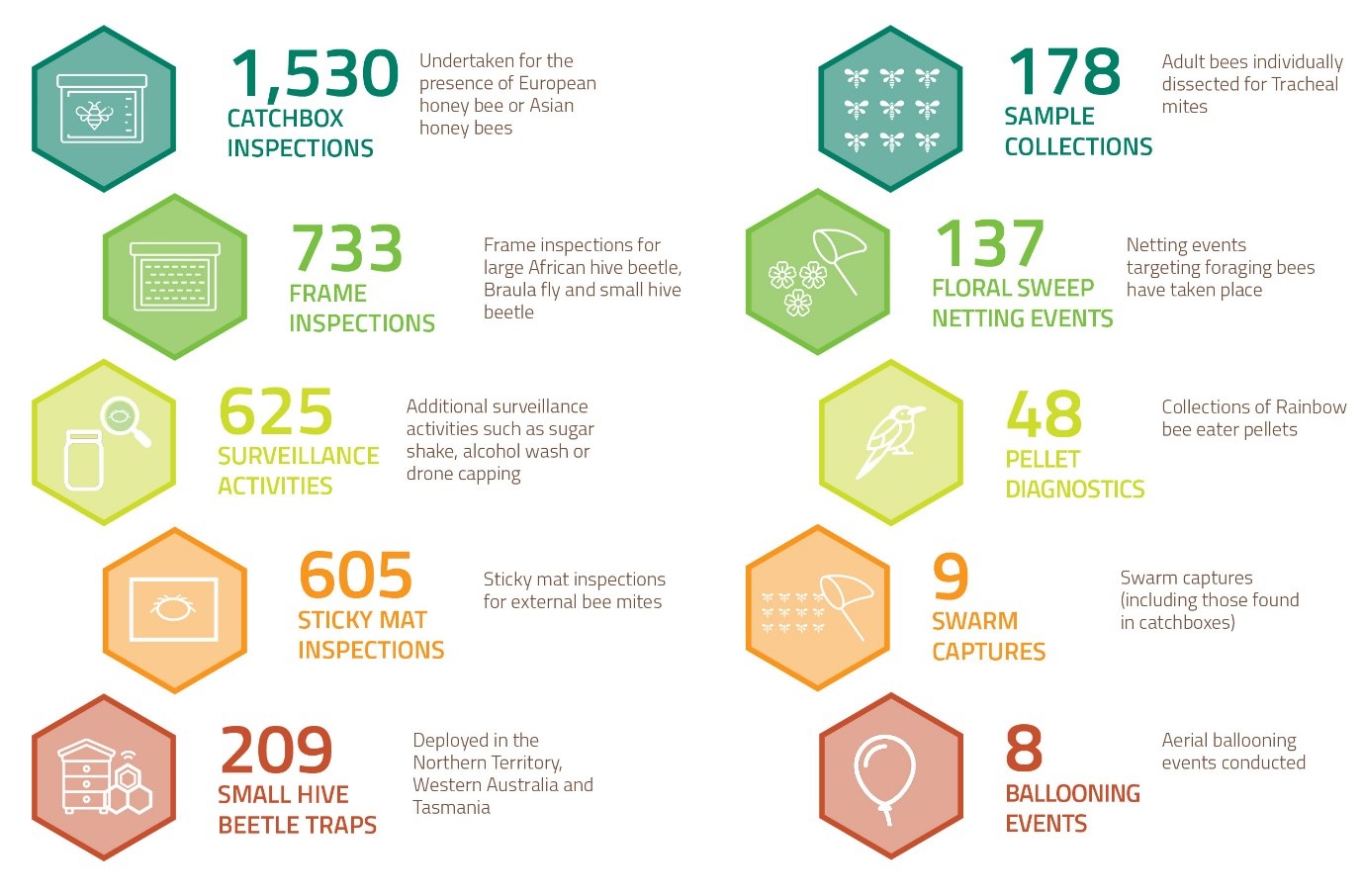Lychees rely on pollination services by various insects, with the European honey bee (Apis mellifera) being a key contributor.
According to a 2024 report on the Value of honey bee pollination to the Australian economy, 80 per cent of lychee crop yield depends on both managed and wild honey bees.
“Pollination-reliant industries such as lychees, as well as the wider community, benefit from a healthy honey beekeeping industry.,” said Dr Lucy Tran-Nguyen, Plant Health Australia’s (PHA) General Manager, Partnerships and Innovation.
Through its investment in the National Bee Pest Surveillance Program (NBPSP), the lychee industry contributes to building a strong biosecurity system.
The NBPSP is funded by Hort Innovation using research and development levies of 14 horticultural industries, with significant co-investment from states and territories and contributions from the Australian Honey Bee Industry Levies, Grain Producers Australia (GPA) and the Australian Government. The NBPSP is coordinated by PHA and delivered by states and Northern Territory government.
“The program ensures Australia has an early warning system in place to protect our valuable honey bee health status,” said Dr Tran-Nguyen.
Fit-for-purpose methods
The NBPSP uses a range of surveillance methods at seaports and airports throughout Australia — the most likely entry points for exotic honey bee pests and pest bees. Additional surveillance at ports is also provided through in-kind contributions by state and territory governments. In 2023, over 4,000 surveillance activities targeted exotic bee pests and bees.
“Methods used at each port location are fit-for-purpose, drawing on past experiences to enhance the effectiveness of surveillance activities,” said Sarah Hilton, PHA’s Manager, Bee Biosecurity.
These activities include monitoring sentinel hives for pests and diseases, catchboxes to capture swarms, rainbow bee-eater pellet analysis for exotic bee detection, aerial pheromone ballooning to detect new species of bees, and nets to capture foraging bees near ports.
Strengthened surveillance efforts
Years of surveillance efforts under the NBPSP have proven successful with two significant detections in sentinel hives. In June 2022, Varroa destructor was detected via sentinel hives in Newcastle, New South Wales, and in February 2024, a single Varroa jacobsoni mite was detected in a sentinel hive at the Port of Brisbane, Queensland and later determined to be associated with a new incursion of Asian Honey Bee.
Increased surveillance efforts continue to target varroa mite in addition to eight other exotic bee pests and pest bees. These efforts are crucial in keeping Australia free from exotic diseases, such as deformed wing virus (DWV), which could enter with new varroa mite introductions.
DWV can cause abnormal bee development, such as twisted wings and bloated abdomens, impacting bees’ productivity and their ability to perform important roles within a colony. Colonies can be greatly impacted once DWV symptoms start appearing at a high prevalence.
“Safeguarding honey bees from high-impact biosecurity threats continues to give us the best chance of maintaining the supply of healthy pollinators for plant industries” said Dr Tran-Nguyen.
Taking action
Lychee growers are urged to report any unusual plant or bee pests and diseases through the Exotic Plant Pest Hotline (1800 084 881). Early reporting increases the chance of effective control and eradication.
“By closely collaborating with beekeepers and promptly reporting any unusual symptoms or unexplained colony deaths, lychee growers can provide vital information on the health of honey bees.,” said Ms Hilton.
“Collaboration between beekeepers and growers is key to ensure best practice pollination services that promote healthy bee populations.”
For more information on the NBPSP, visit PHA’s website.
 More than 4,080 surveillance activities were conducted by the NBPSP in 2023.
More than 4,080 surveillance activities were conducted by the NBPSP in 2023.
